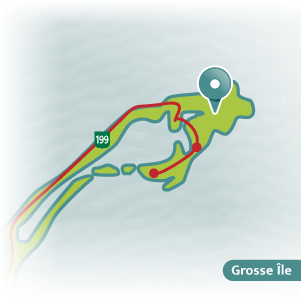
Cap aux Meules Island (also known as Grindstone Island)
1Cap aux Meules Island is divided into three sectors:
CAP-AUX-MEULES
The town of Cap-aux-Meules is the commercial centre of the region. Most services and businesses are concentrated here.
Enjoy a hike in Parc des Buck and admire the view over the island and other nearby islands.
Hike or cycle along the coast on the Sentier du Littoral trail to admire the impressive view from the lookout at the top of the cape.
Take a detour via Chemin de Gros-Cap to see some of the Islands’ typical colourful houses. On the way, be sure to visit the Saint-Pierre de Lavernière Church, one of the largest wooden churches in North America and an island landmark.
L’ÉTANG-DU-NORD
Visit the Site de la Côte in L’Étang-du-Nord. This is a public park and lively meeting place where you will find a multitude of boutiques as well as an auditorium, a fishing harbour, walking trails and a friendly restaurant with a patio.
The L’Étang-du-Nord Lighthouse, located on Cap Hérissé, offers a peaceful view from late afternoon until sundown.
FATIMA
Belle Anse (which means “beautiful cove”) is surrounded by steep red cliffs that glow at sunset.













